Did you know that whenever a website takes longer than three seconds to load, mobile visitors are highly likely to abandon the page and never look back? This means that not only the quality but also the performance of digital content is key in determining its impact. Speed and reliability are more than just important user experience parameters, they're also decisive in search engine rankings.
Content delivery networks, or CDNs, offer one of the best ways to speed up your website. These server networks deliver content from regional servers to end-users, making it possible to provide them with large amounts of data at fast speeds.
Statistics: The Most Popular CDNs
To determine what the most popular CDNs are, we evaluated 5 million of the most-visited websites on the planet. Below, we've presented our findings.
Cloudflare
Cloudflare, with more than 6 million linked domains, is the world's leading CDN provider. One major reason for its popularity is its free plan which offers all of the most important features expected of a CDN, meeting the needs of most private users or amateur programmers.
Setup and management are easy, and users won't get confused in its well-organized interface. Taken together, it's easy to see why Cloudflare is the most popular CDN in the world.
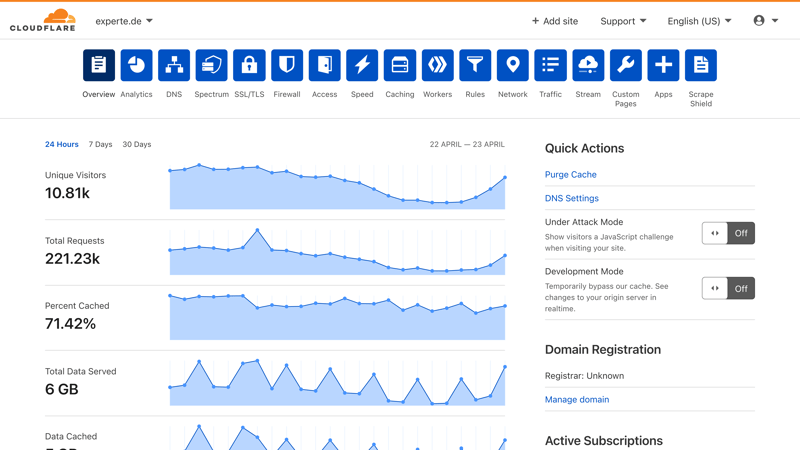
Cloudflare is seen as the CDN all-arounder.
Apart from performance, Cloudflare also focuses on security, offering DDoS protection and an effective firewall for paying subscribers. Also included are free SSL encryption and a highly versatile analytics tool.
Despite its impressive performance, Cloudflare scores lower in regard to speed, having to settle for a place near the bottom of CDNPerf's ranking. As another drawback, additional features and extras are only available to paying subscribers, with plans starting at $20 per month. Services that have high requirements, like live streaming, aren't supported either.
Extensive free plan - no bandwidth limits
Good performance, large server network
Easy setup and use
Powerful security features (DDoS protection and firewall)
Extensive analytics tool
Limited support for non-paying subscribers
jsDelivr
jsDelivr is a free public CDN for open-source content that has grown to become a favorite among developers. Likely thanks to its integration of open-source developer platforms, it's the second most popular platform in our ranking. Unlike other CDNs, jsDelivr doesn't operate its own server network, relying instead on Cloudflare, Fastly, and Bunny.
The service's algorithm uses a client's location and the CDN provider's current performance to offer them the best available channel. This helps to not only guarantee fast loading times but also protects against potential service disruptions.
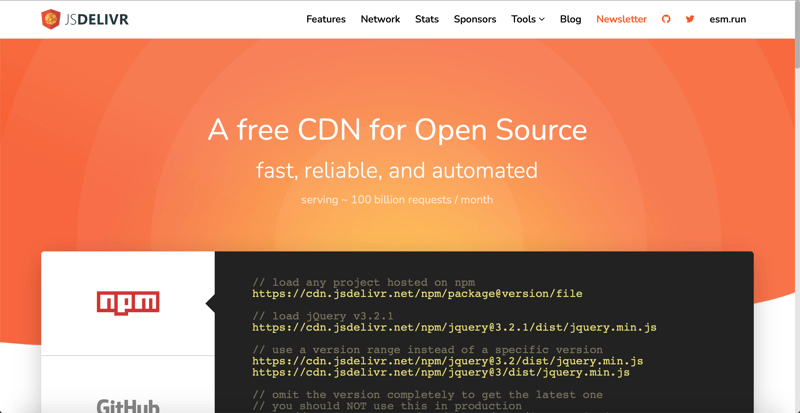
jsDelivr offers quick loading times and unique features.
jsDelivr is closely linked to GitHub and npm, two open-source platforms. This makes it possible to transfer data in a flash and without any prior setup. Some features, like the ability to load multiple files with a single HTTP request, or version aliasing (the automatic upload of the latest version of a project) are unique amongst CDN providers.
In addition, jsDelivr is compatible with all types of files, including JavaScript libraries, jQuery plugins, and CSS Frameworks.
Fast and reliable, uses multiple CDNs
Free and open-source
GitHub, npm, and WordPress content integrations
Extensive features; specifically designed for developers
No professional support (only community)
Potentially too complex for simple projects
Amazon CloudFront
Amazon CloudFront is part of Amazon Web Services (AWS). It uses the ecommerce giant's global infrastructure to reliably deliver content of any size. CloudFront can easily be combined with other AWS apps like Amazon S3 or Amazon EC2, offering both developers and businesses highly versatile design options.
The CDN can also be highly customized, thanks to its extremely detailed server settings. Security is emphasized too owing to the incorporation of services like AWS Shield Standard, which protects against DDoS attacks.
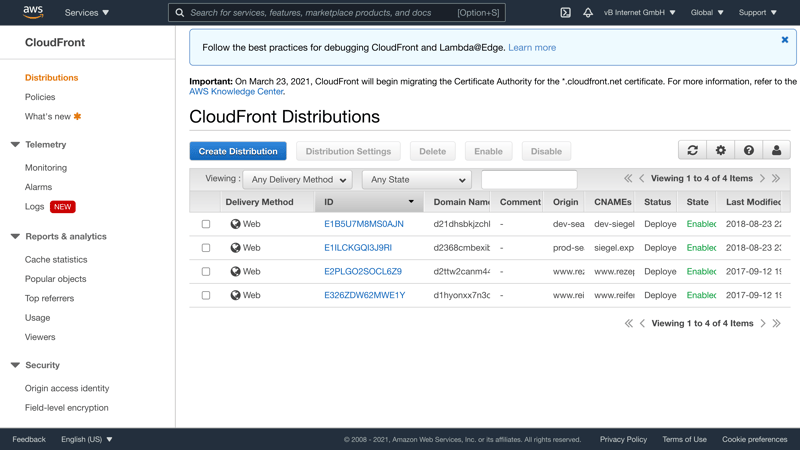
CloudFront is part of Amazon's digital empire.
Those who have already worked with AWS will quickly find their way around CloudFront since the interface is identical. For newcomers, things might be a bit overwhelming at first owing to the variety of options.
Once everything has been configured, CloudFront's comprehensive analytical tools impress. With these, it's possible to set custom alarms whenever data limits are exceeded. As such, Amazon CloudFront is well-suited for both static, as well as more complex dynamic content, such as streaming.
CloudFront's price is calculated based on how much data is needed, as well as per GB of data used. The pricing structure is not straightforward and varies from target region to target region. Users can test the service for free for a year, so long as they don't exceed the (monthly) data volume of 50 GB and/or 2 million HTTP and HTTPS requests.
Fast and reliable
Comprehensive package, flexibly adjust server settings
Includes other Amazon service integrations
Security-focused
Free to try for a year
Relatively complex pricing model, especially for beginners
Complicated (overloaded) user interface
CDN Trends
The market for CDNs is constantly adapting to change. Since CDNs have gained recognition as a regular tool, customer requirements for enhanced customizability and flexibility have grown. New providers have staked our segments of the market, winning large numbers of clients in the process. We took a look at which CDNs have made the greatest strides from 2020 to 2023 in terms of development, as well as some of the current trends.
Netlify
Netlify is a cloud-computing company that offers hosting and serverless backend services for web apps and static websites. Users can create, host, and manage websites or web apps. Like jsDelivr, the company also makes it easy to integrate GitHub and GitLab content.
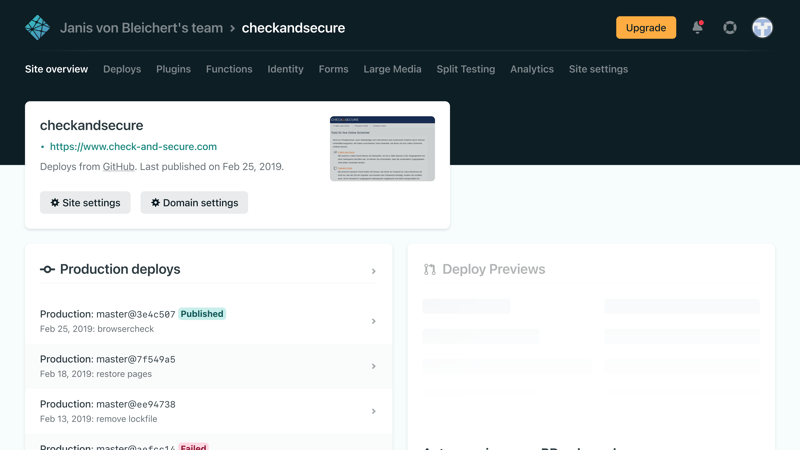
Netlify has quickly grown in popularity.
Founded in 2014, Netlify experienced rapid growth, counting more than 1 million users as of the time of writing. The service is well-suited for a variety of applications, such as ecommerce sites, web apps, conference pages, global web campaigns, or even sharing documents online.
Netlify's user interface is tidy too, making it ideal for beginners. Since the service's Free plan lacks some important features, we recommend the Pro plan, which starts at $19 per month
User-friendly, community-focused
Easy to integrate Git content
Free SSL and DNS options
No support for dynamic content
Fastly
Fastly has been on the market for around a decade, doing enough to impress numerous big names like Shopify, Slack, and Spotify, all of whom use it. As an edge cloud-based CDN, Fastly has the advantage of being able to update content to its newest version in real-time.
The service advertises its ability to let users program their server settings, granting complete control over how content is made available to site visitors. Other highlights include the automatic optimization of image content, protection against DDoS attacks, a firewall, and real-time logs which help to quickly identity website problems.
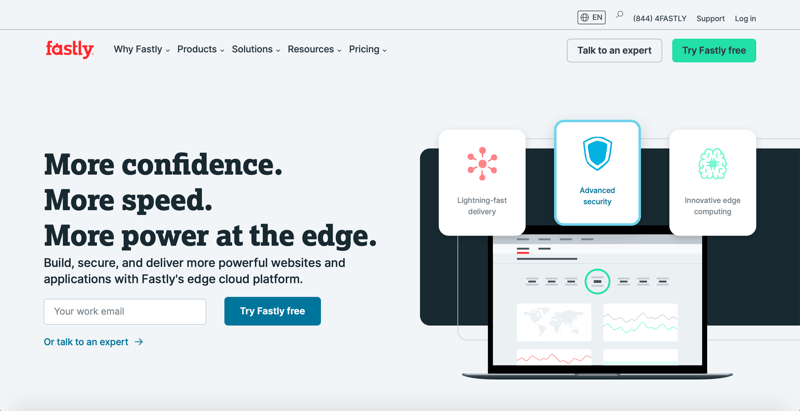
True to its names, Fastly impresses when it comes to speed.
On average, Fastly only needs 150 ms (instant purge) for cache invalidation, compared to the five seconds traditional CDNs require. Fastly also supports all content, including live streaming.
Owing to the number of options that are made available, Fastly can be technically overwhelming for beginners, to say nothing of its relatively high price. Fastly offers a trial version that includes $50 worth of traffic. Paid plans are calculated based on the amount of bandwidth used, similar to Amazon CloudFront.
Real-time content updates
Extensive server settings
High security: DDoS protection and a firewall
Comprehensive support
Relatively expensive
Steep learning curve
Google Cloud CDN
Google Cloud CDN makes use of Google's global infrastructure to temporarily store cloud content near its end-user. Integrating Google services like Cloud Monitoring and Cloud Logging is child's play, making it easy to view analytics data.
Owing to the structure of Google's global network (servers in 180 countries) content can be kept particularly close to the end-user, which reduces load time. According to CDNperf, Google Cloud CDN comes in the Top 5 in terms of speed.
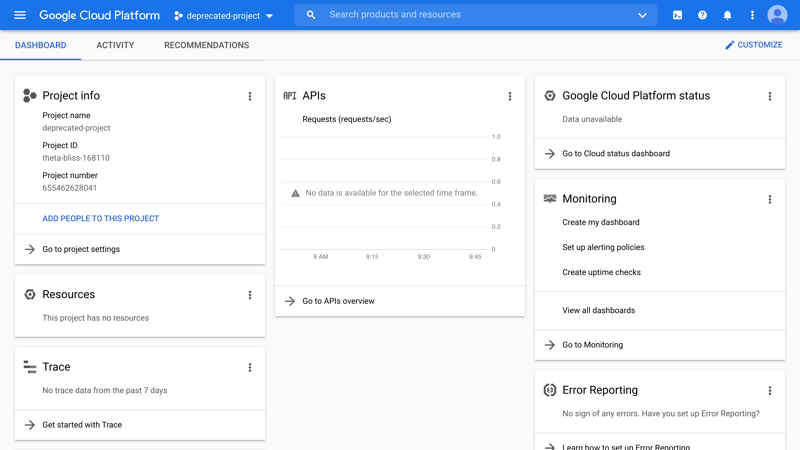
Google Cloud CDN scores owing to its high speeds.
Support is less impressive. We're fairly certain that the sheer enormity of Google is to blame for the slow response times, but still, that's no excuse.
As with CloudFront, usage costs are based first on how much bandwidth is needed, divided into outgoing cache traffic, cache filling, and HTTP/HTTPS requests, and then by region.
Consistently fast CDN
Integrated with other Google services
Powerful security features
Comparably long support response times
Complicated pricing model, expensive
Overall Result
We've summarized our findings for you in the table below:
Conclusion
CDNs are here to stay because of their ability to quickly and reliably provide content. Cloudflare, the only provider above which offers a free plan without bandwidth limits, will definitely continue to appeal to a wide range of users. Still, alternatives with extras and additional features, or targeting specific user groups and those who want to create detailed projects, should not be ignored.
Differences between CDNs relate largely to what types of content they support, as well as their options for customizing performance. The actual difference in speed is difficult to determine since page loading times depend on multiple factors including location and Internet bandwidth. For most users, these differences (milliseconds) would barely be noticeable and should not figure all that much in your final decision.
In looking to the future, edge computing appears to be the trend that CDNs will have to pay close attention to. By bringing content closer to where it is needed, a great deal of freedom is gained in terms of individual adjustments. Only time will tell if the providers now contesting the market will adapt to this development and be able to get in on the ground floor.
FAQs
With more than 6 million linked domains, Cloudflare is hands down the most-used CDN. This can be largely traced to the service's free plan, which meets the needs of most private and individual users.
This depends on your project, how much customizability and flexibility you need, and your experience with CDNs. Other factors include a CDN's coverage in your area, or where you want your content to be accessible. For most people, free or basic plans are usually more than enough. However, if you'd like to have greater control or offer live content steaming, you might want to consider some alternatives.
If you like the way a particular website looks and want to know which CDN it uses, check out EXPERTE.com's Technology Check.










